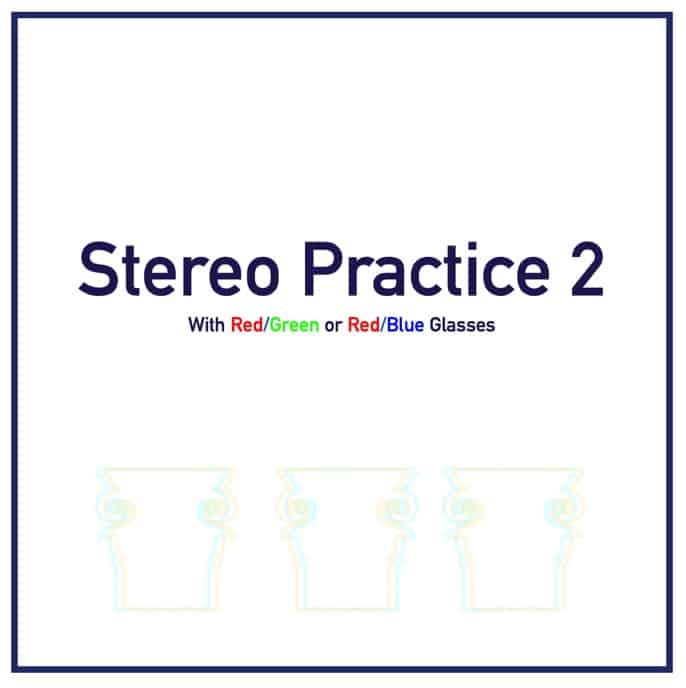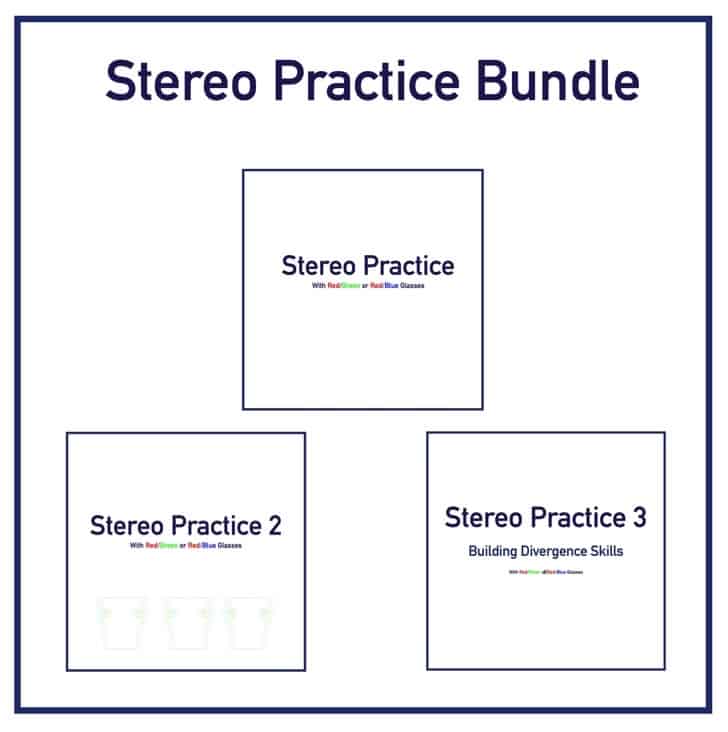A simple google search for “eye exercises” will land you on a dozen websites explaining how to do pencil push-ups. Dig a little deeper and you may learn about a Brock String or “lazy eye games” on apps or computer programs. While these exercises are great and I’ve done them all, they aren’t the meat and potatoes of eye exercises. The most powerful exercises for strabismus involve learning how to perceive, sense, and see space. This concept has taken years for me to grasp, but now I’m finally getting it. Computer stereo exercises are a favorite way to learn those skills!
So what are the best home computer exercises for building stereo and the perception of space for strabismus? Images that work with red/blue glasses to create a 3D image can help stretch convergence and divergence which will convert to improved 3D seeing in the real world! Images and exercises that help you feel diagonal, and in and out movement help your brain gain a sense of space, which is the essence of seeing in 3D. All of these combined will help your brain learn to use both eyes which will fix the real problem with strabismus and they will be able to get and stay straight.
I have tried pretty much every vision therapy eye exercise out there and there are so many that are too easy and so many that are too hard, but the middle ground that bridges between the two has less to offer.
I ended up creating my own (with my optometrist’s approval, of course) and they have ended up being some of the most powerful for me because I can adjust and fine tune until they work for me.
An important part of learning to see in 3D is to start where you are already successful and then building up from there.
I created the perfect situation for my brain to sense depth and then built from there. Some optometrists might think it’s too easy, but for me, it has been the bridge to more difficult exercises.
Everything I make is available to purchase for next to nothing in my shop. I want to help people find success (and keep this website running) and I’ve come up with some pretty amazing exercises with all of my best tips and strategies. You can either buy individual PDFs that each have 3-4 exercises for $5 each, or get the bundle of 3 for just $10.
But BEFORE you go and buy all of the downloads, read this article so that you know how to do them correctly. Just staring at a screen isn’t going to change your life, you need to do it correctly!
So put on your red/blue glasses (red/green work too) and let me teach you 5 strategies and exercises to take you on the next step towards fixing strabismus.
Before we begin, a quick disclaimer. Strabismus is complicated and you should only do these exercises if you are working with an optometrist to develop 3D vision. They are awesome, but need to be combined with a full treatment plan that is tailored for your unique circumstances. I can’t guarantee that they will work for you and many times strabismus will require exercises and surgery to get straight eyes that work well together.
Whew, now that that is out of the way…
Near-Far Switches
First is the basic of skill of switching your eyes from looking far to looking near. It sounds so simple, but it isn’t. Before even looking at your computer, go look out a window.
- Hold up a finger in front of your nose and look at the farthest thing you can find.
- Switch your focus to your finger.
- Switch to something in the middle.
- Keep switching back and forth at different distances and here is the important part, become completely in tune with your eyes shifting.
- When you look far, your eyes shift slightly out. When you look near, your eyes shift in (think crossed eyes).
- Can you feel it? Now try it with your eyes closed. Can you “look” far and feel your eyes move apart?
- Try to feel your eyes moving through space in a fluid way, not jumpy.
Once you have mastered feeling this. Try it with stereo images.
With red/blue glasses on with red on the right side, look at the following pair of images. The one labeled “far” should appear to be inside of the screen while the one labeled “near” should appear to be in the air between you and the screen.
For this exercise, move your eyes between the two circles and try to get that same feeling of your eyes moving in and out as you switch from near to far.
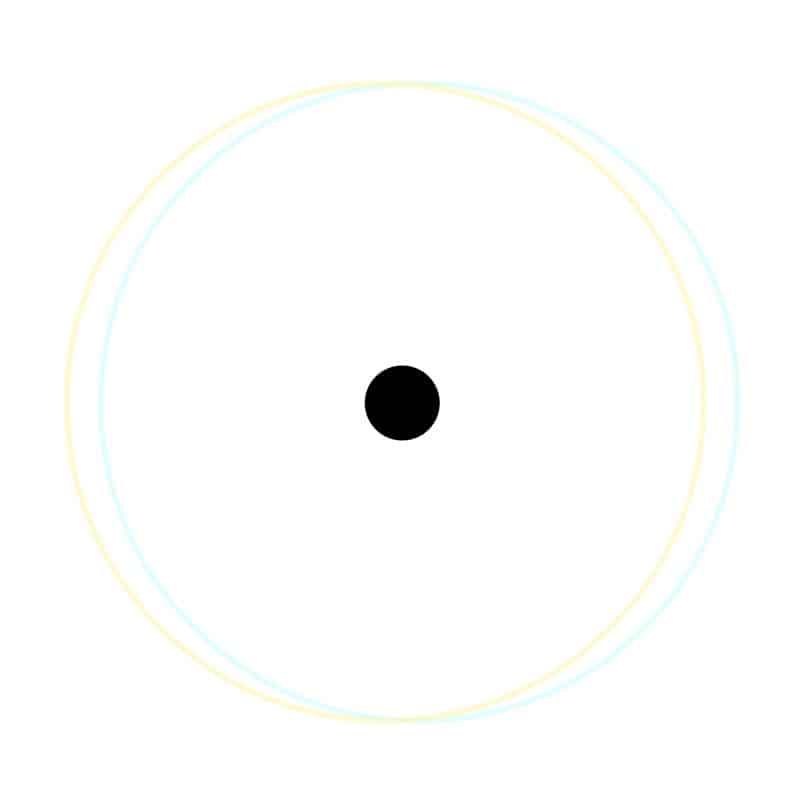
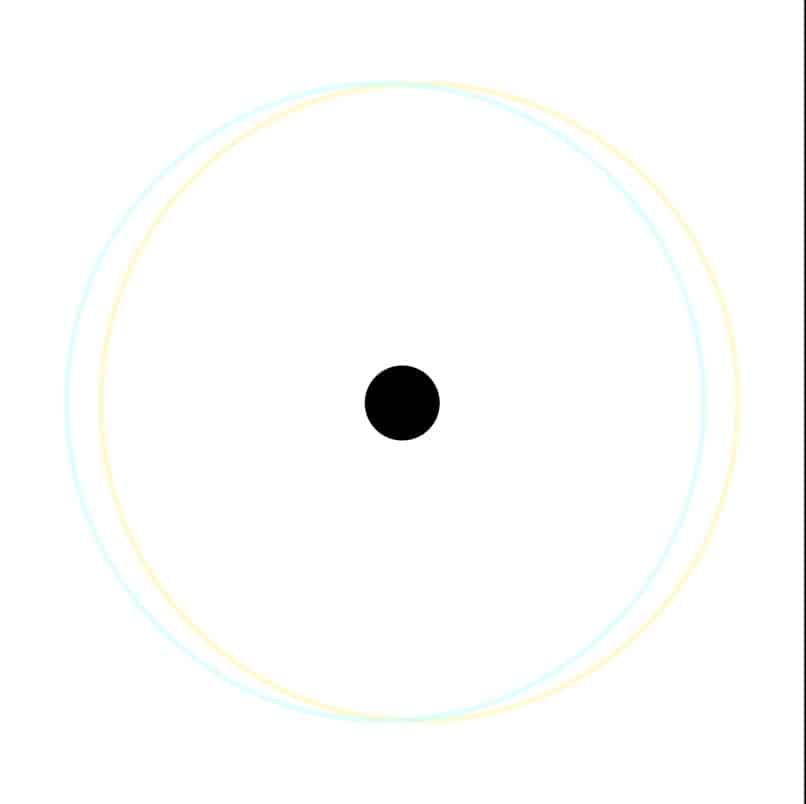
If you’re a beginner, this will be difficult and you may not be able to see depth. In my Stereo Practice 1, I have some great set-ups that make switching between near and far much easier.
Diagonal Viewing
Seeing diagonally is hard to grasp if you see in 2D, but even harder to accomplish, but the good news is that every time you do hard things, you get stronger.
Take a look at the picture of the people flying kites.
If I asked you to follow one of the kite strings with your eyes from the kite down to the people and asked you which direction your eyes moved, your answer would likely be “down.”
Which is true. They move down, but also slightly to the left. So it is a down and to the left movement.
And if we were standing on that field in real life, they would be moving down, left and towards you. 3 directions at once.

Those with strabismus view the world as left-right and up-down. Of course we know that there is an in-out, but that’s not how we see or describe what we see. It doesn’t come naturally and must be learned.
You can practice this in real life with a rope, but I find huge value in doing it with 3D images. It just feels different and works my eyes in a unique way. My Stereo Practice 2 focuses on this skill.
Diagonal Viewing:
1. Put on red/blue glasses with red on the right side.
2. Look at the top of the line on the left, it has the illusion of coming out of the screen.
3. Now slowly move your eyes down the line to the bottom that is going into the screen.
4. Can you feel your eyes moving in and out like they did with the near far switches? This time it is a smooth movement instead of a jump, but they still move closer together when looking near and further apart when looking far.
5. The line on the right is the opposite, far at the top and near at the bottom.
6. Keep moving your eyes back and forth until you can feel and see the difference in depth.

Convergence Stretching
Like I mentioned before, convergence is the ability of the eyes to point inward and focus on the same point when looking up close. The eyes move in and they also amp up their focusing. This is a struggle for SO many people and can double or blurry vision while reading for people who don’t even have strabismus.
So it’s even harder for folks with strabismus whose eyes aren’t coordinating, and especially difficult with exotropia, or an outward eye turn.
There are a million and one different convergence activities and exercises, but one that is helpful for me is using stereo circles to stretch my convergence.
I usually do it in a slide show setting so I can quickly go between slides and have the circles be full screen. I also usually have 10-20 variations instead of 4 so the changes from one circle to the next are very slight.
But for the purposes of this article, we are just going to use these four circles. If you can’t see great depth, don’t despair, it is much harder with a small target, this is just to give you the idea.
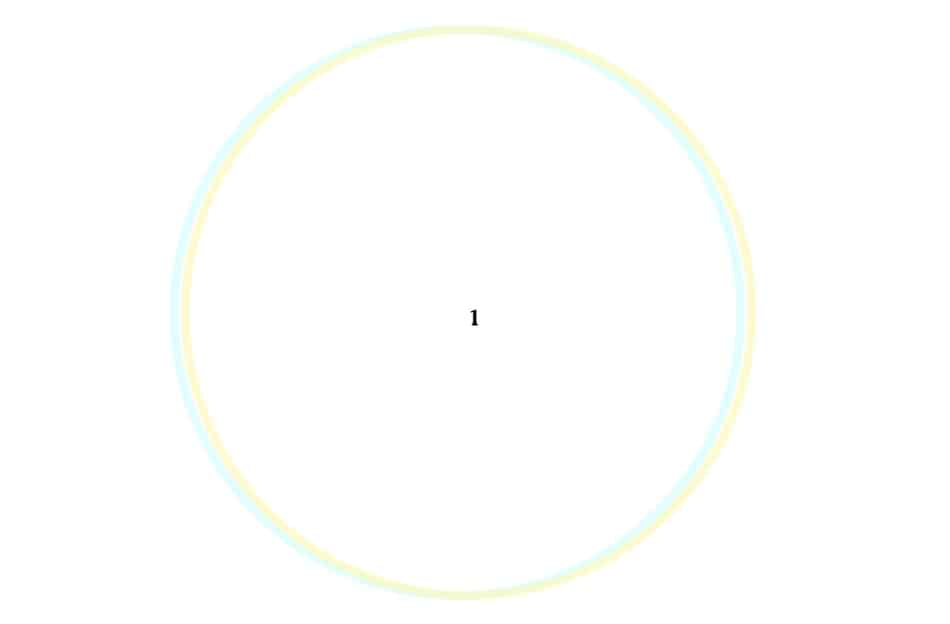



- Put on red/blue glasses with red on the right.
- Look at the first circle and notice that it is coming out of the screen, just a bit. If possible, enlarge the screen!
- Using your finger, or a pencil try to locate where the ring is in space.
- It may help to try a few tricks:
- Put an object (like a water bottle) in front of the screen but off to the side and compare the depth with the object.
- Move closer/further
- Relax and walk your eyes around the circle.
- Try to keep the four corners of your computer or phone in view while looking at the ring.
- Imagine the space between you and the screen and the space behind the screen and picture a ring floating in the space.
- Wiggle your fingers in front of your face so that you can see them peripherally, but keep your focus forward.
- Close your eyes and relax them for 10-20 seconds then flash them open for an instant to quickly observe the ring, then close again. While your eyes are closed, visualize a floating ring, then flash again. This one works!
- If you have glasses with prism, use them until you are successful to help your brain get the idea. They are a crutch, but a needed one at times!
- Now move on to the next ring and the next until the ring starts to double. Use all the tricks to try to keep it single with good depth.
When doing this with multiple rings, you may make it to ring 3 before it doubles so you’ll work on using the tricks to move to 4, 5, 6, etc. This all takes time and patience, do not expect success over night!
Divergence Stretching
This is very similar to convergence stretching but instead of the ring coming out of the screen, it is going into the screen.
For most people, especially esotropia patients, divergence is the harder skill.
Follow the exact same tips and steps as you did for Convergence Stretching, but add on a few important tricks that work especially for diverging.
- Imagine that the screen is a window and you are looking through the window, not at it. Feel the space behind the screen.
- Imagine the space behind you, can you visualize what is behind you?
- Look at something past the screen, like the back of the wall and feel the eyes move apart. This is the same feeling you should get while looking at the ring behind the screen.
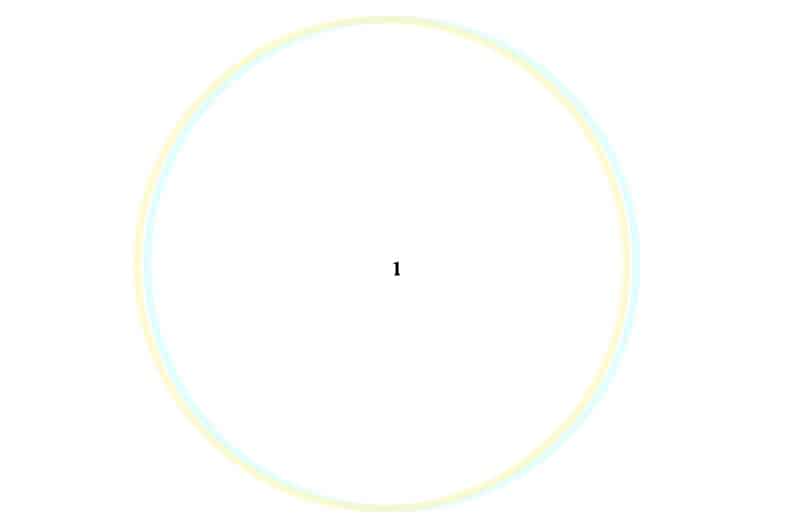
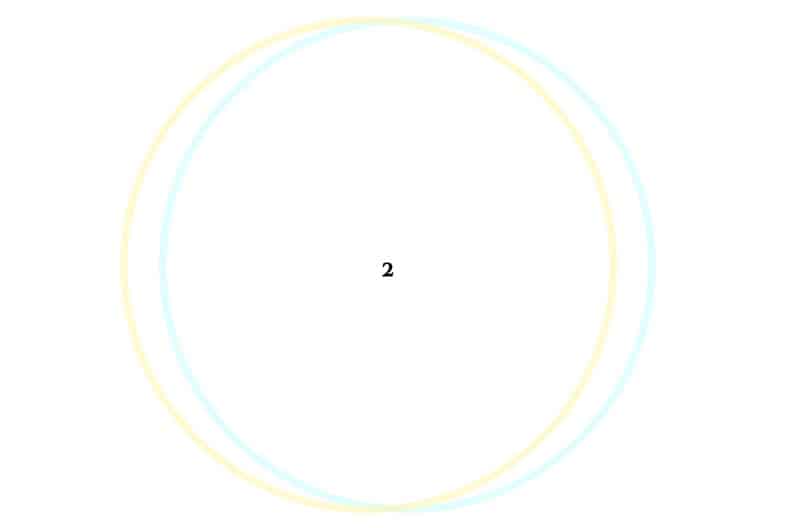
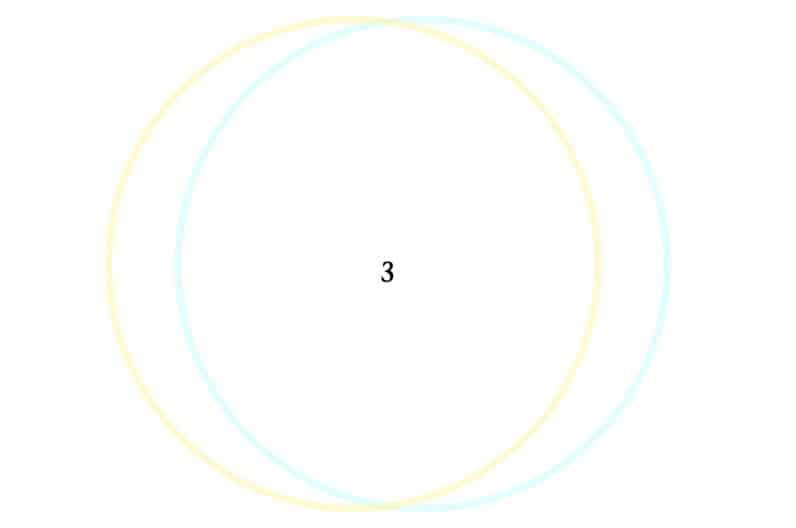
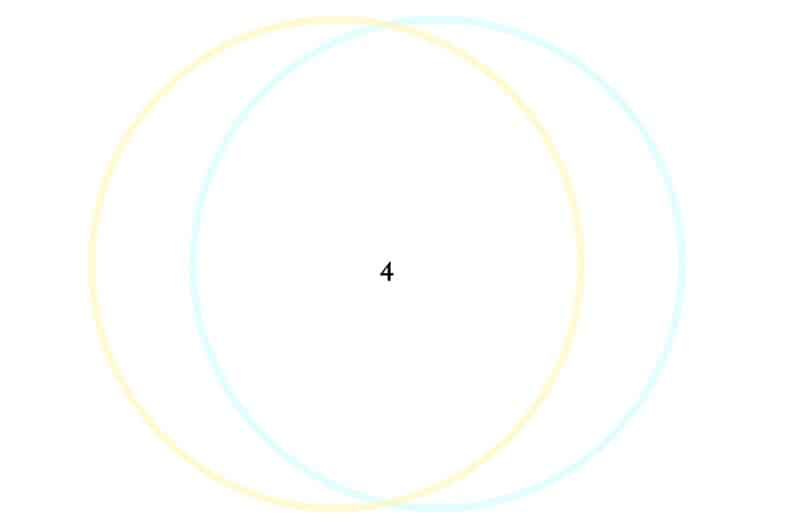
Conclusion
For eyes to be straight, they need to know how to work together. Converging is how they work together at near, and diverging is how they work together in the distance. As these skills are strengthened, the brain will begin to do both in daily life without the help of special glasses and exercises.
To get more in-depth, full screen exercises, head over to my shop and pick up Stereo Practice 1, Stereo Practice 2, Stereo Practice 3, or get the whole bundle. They each have something unique to offer and give detailed tips and specific directions.
But remember to relax your eyes and mind, visualize and believe the stereo and give it plenty of time.


